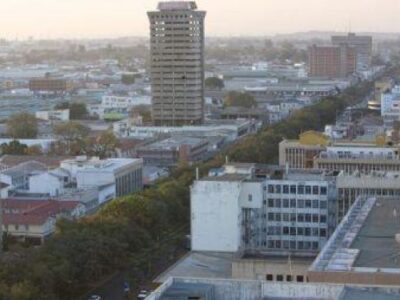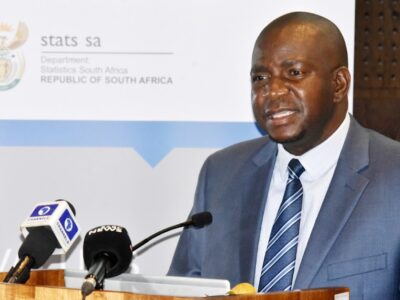Of course, this will prompt fury from ideological quarters, but let them rage. The Zondo Commission itself warned that BEE had become a veil for corruption, and Harvard’s Growth Lab found it to be a “tax on growth”. Moreover, people are increasingly realising that BEE has in fact failed SA economically. According to an April 2025 Ipsos poll, only 44% of South Africans, less than half, still support keeping BEE in place.
If we are serious about transformation, we have to stop confusing symbolism with outcomes.
Axe the deadweight public service
When we speak of the “public service”, we often picture nurses and police officers. Our problem is not the essential front line of nurses and police officers. Instead, it’s the sprawling bureaucracy behind them. Underperforming administrators, underworked and overpaid diplomats, and bloated ministries that seem to exist to produce PowerPoints and organise conferences close to airports.
Public service compensation consumes about 12%-13% of GDP, significantly higher than global norms. In contrast, the OECD average for public sector wage bills is about 9.2% of GDP. A Centre for Risk Analysis report showed that SA has the third-highest government wage bill as a share of GDP among 20 major economies.
Since 1996, tax extraction has risen from 19.8% to more than 25% of GDP, even as government effectiveness has plummeted by more than 50%, placing SA at the very bottom of the global “value-for-tax” rankings. We are paying Scandinavian-level tax rates for Cuban-level governance and infrastructure development. We have passed from inefficiency to immorality. How does one enjoy a life of luxury knowing full well that it came at the cost of a disappointed and struggling populace?
The fix is straightforward, though not painless:
- Reduce the executive from its current 77 members to just 26 executive (ministers and deputy ministers) positions, merging or abolishing vanity departments (do we really need a ministry of sports, arts and culture?). Twelve ministers, 12 deputy ministers, president, deputy president. Klaar.
- Close underperforming Setas, whose impact on skills development is, after three decades of trying, anywhere between negligible and negative.
- Downsize or repurpose the military and diplomatic corps, absorbing critical skills into civilian border security and public safety agencies.
These are not draconian libertarian fever dreams. They are necessary steps to prevent fiscal implosion. SA spends more on servicing its debt than on higher education. A leaner state, focused on outcomes not employment quotas, would be a step towards restoring credibility and investor confidence.
This is not about austerity for its own sake. It is about spending less to get more — the simplest definition of reform.
Open the infrastructure taps — without the red tape
You don’t need to read a World Bank report to know that our infrastructure is crumbling. You only need to ship avocados through Durban, drive a truck from Lephalale, or take a cold shower in Johannesburg (if there’s water to begin with).
Our ports rank among the worst in the world. Eskom, though stabilising in 2024 and 2025, remains an albatross. Trains have vanished from half the map. Water systems leak billions of litres daily. Meanwhile, public capital formation has collapsed to 14% of GDP, among the lowest in the developing world.
The funders are there; they can simply not pass through the bottleneck of bureaucracy.
We must unleash private investment into infrastructure through three simple acts of policy heresy:
- Remove race-based requirements for private sector infrastructure tenders — investors want reliable returns, not ideological mazes.
- Accelerate regulatory approvals for energy, water and logistics projects, including special economic zones with fast-track status. But not like the SEZs that have been promised for years — actual hubs of investment, with real permits, real construction, and real jobs, not just ribbon-cuttings and PowerPoint slides.
- Break up Eskom and Transnet’s monopolies, not just on paper but in operational control, with credible public-private partnerships under firm rules.
Yes, the state must still play a role but it must be a referee, not the star striker. SA’s comparative advantage is not scale, it is flexibility. Our future lies in a mixed economy with a liberated infrastructure grid, not a Soviet-style ministry dictating who may build what and where.
Let Cape Town run like Singapore. Let Gqeberha invite Singaporean port operators. Let Mpumalanga auction independent rail concessions. Let Johannesburg fix its water or let the private sector do it, and bill the city later.










Comments